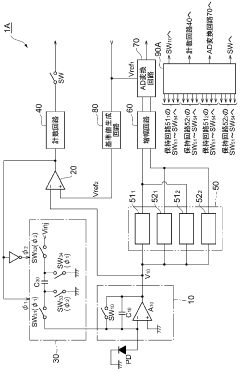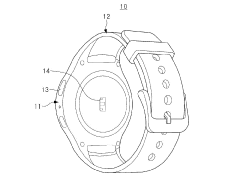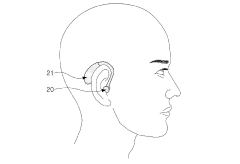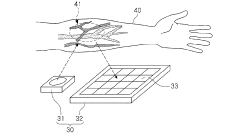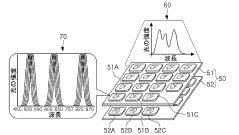Signal processing algorithms for photodiode-enhanced devices
AUG 21, 20259 MIN READ
Generate Your Research Report Instantly with AI Agent
Patsnap Eureka helps you evaluate technical feasibility & market potential.
Signal Processing Evolution and Objectives
Signal processing algorithms for photodiode-enhanced devices have undergone significant evolution over the past decades, driven by the increasing demand for high-performance optical sensing and communication systems. The journey began with simple analog signal processing techniques and has progressed to sophisticated digital algorithms capable of extracting minute details from complex optical signals.
In the early stages, signal processing for photodiode devices primarily focused on amplification and basic filtering to improve signal-to-noise ratios. As technology advanced, more complex techniques such as lock-in amplification and synchronous detection were introduced, enabling the extraction of weak signals from noisy backgrounds. These developments were crucial for applications in spectroscopy and optical communication.
The advent of digital signal processing (DSP) marked a pivotal moment in the field. DSP algorithms allowed for more advanced noise reduction, signal reconstruction, and data compression techniques. This shift enabled photodiode-enhanced devices to operate in increasingly challenging environments and handle higher data rates.
Recent years have seen a surge in adaptive and intelligent signal processing algorithms. Machine learning and artificial intelligence techniques are being integrated into signal processing pipelines, allowing for real-time optimization of device performance based on environmental conditions and signal characteristics. These advancements have opened up new possibilities in areas such as autonomous vehicles, medical imaging, and high-speed optical communications.
The primary objectives of current signal processing research for photodiode-enhanced devices are multifaceted. One key goal is to further improve sensitivity and dynamic range, allowing for the detection of extremely weak signals while maintaining performance in high-intensity scenarios. This is particularly crucial for applications in low-light imaging and long-range optical sensing.
Another important objective is to enhance the speed and efficiency of signal processing algorithms. As data rates continue to increase, there is a growing need for algorithms that can process information in real-time with minimal latency. This is driving research into parallel processing techniques and hardware acceleration of signal processing tasks.
Researchers are also focusing on developing more robust algorithms capable of operating in diverse and challenging environments. This includes techniques for mitigating the effects of atmospheric turbulence in free-space optical communications and methods for separating overlapping signals in dense sensor networks.
Looking ahead, the field is moving towards more integrated and holistic approaches to signal processing. Future algorithms are expected to seamlessly combine multiple processing stages, from initial signal acquisition to final data interpretation, in a single, optimized pipeline. This integration aims to maximize overall system performance and efficiency, paving the way for next-generation photodiode-enhanced devices with unprecedented capabilities.
In the early stages, signal processing for photodiode devices primarily focused on amplification and basic filtering to improve signal-to-noise ratios. As technology advanced, more complex techniques such as lock-in amplification and synchronous detection were introduced, enabling the extraction of weak signals from noisy backgrounds. These developments were crucial for applications in spectroscopy and optical communication.
The advent of digital signal processing (DSP) marked a pivotal moment in the field. DSP algorithms allowed for more advanced noise reduction, signal reconstruction, and data compression techniques. This shift enabled photodiode-enhanced devices to operate in increasingly challenging environments and handle higher data rates.
Recent years have seen a surge in adaptive and intelligent signal processing algorithms. Machine learning and artificial intelligence techniques are being integrated into signal processing pipelines, allowing for real-time optimization of device performance based on environmental conditions and signal characteristics. These advancements have opened up new possibilities in areas such as autonomous vehicles, medical imaging, and high-speed optical communications.
The primary objectives of current signal processing research for photodiode-enhanced devices are multifaceted. One key goal is to further improve sensitivity and dynamic range, allowing for the detection of extremely weak signals while maintaining performance in high-intensity scenarios. This is particularly crucial for applications in low-light imaging and long-range optical sensing.
Another important objective is to enhance the speed and efficiency of signal processing algorithms. As data rates continue to increase, there is a growing need for algorithms that can process information in real-time with minimal latency. This is driving research into parallel processing techniques and hardware acceleration of signal processing tasks.
Researchers are also focusing on developing more robust algorithms capable of operating in diverse and challenging environments. This includes techniques for mitigating the effects of atmospheric turbulence in free-space optical communications and methods for separating overlapping signals in dense sensor networks.
Looking ahead, the field is moving towards more integrated and holistic approaches to signal processing. Future algorithms are expected to seamlessly combine multiple processing stages, from initial signal acquisition to final data interpretation, in a single, optimized pipeline. This integration aims to maximize overall system performance and efficiency, paving the way for next-generation photodiode-enhanced devices with unprecedented capabilities.
Market Demand Analysis
The market demand for photodiode-enhanced devices with advanced signal processing algorithms has been experiencing significant growth across various industries. This surge is primarily driven by the increasing need for high-precision sensing and detection capabilities in applications ranging from consumer electronics to industrial automation and healthcare.
In the consumer electronics sector, there is a growing demand for improved camera performance in smartphones, tablets, and wearable devices. Photodiode-enhanced devices with sophisticated signal processing algorithms enable better low-light performance, faster autofocus, and more accurate color reproduction. This trend is expected to continue as consumers seek devices with superior imaging capabilities.
The automotive industry represents another major market for these technologies. Advanced driver assistance systems (ADAS) and autonomous vehicles rely heavily on photodiode-based sensors for object detection, lane keeping, and adaptive cruise control. As the automotive industry moves towards higher levels of autonomy, the demand for more sensitive and accurate photodiode sensors with robust signal processing algorithms is projected to increase substantially.
In the healthcare and medical devices sector, photodiode-enhanced devices are crucial for various diagnostic and monitoring applications. From pulse oximeters to blood glucose monitors, these devices require precise signal processing to ensure accurate readings. The aging population and the growing prevalence of chronic diseases are driving the demand for more advanced and reliable medical devices, further boosting the market for photodiode-enhanced technologies.
The industrial automation sector is another key driver of market demand. Photodiode sensors with advanced signal processing capabilities are essential for quality control, process monitoring, and safety systems in manufacturing environments. As industries continue to adopt Industry 4.0 principles and smart manufacturing practices, the demand for high-performance sensing technologies is expected to grow significantly.
Environmental monitoring and scientific research applications also contribute to the market demand. Photodiode-based devices are used in spectroscopy, air quality monitoring, and climate research, where precise measurements and signal processing are critical. The increasing focus on environmental issues and the need for accurate scientific data are likely to drive further demand in this sector.
The telecommunications industry, particularly in the field of fiber-optic communications, relies heavily on photodiode technology for high-speed data transmission. As global data traffic continues to surge, the demand for faster and more efficient optical communication systems, incorporating advanced photodiode sensors and signal processing algorithms, is expected to rise.
Overall, the market for photodiode-enhanced devices with advanced signal processing algorithms is poised for substantial growth across multiple sectors. The continuous advancement in semiconductor technology, coupled with the increasing demand for high-performance sensing and detection capabilities, is expected to drive innovation and market expansion in the coming years.
In the consumer electronics sector, there is a growing demand for improved camera performance in smartphones, tablets, and wearable devices. Photodiode-enhanced devices with sophisticated signal processing algorithms enable better low-light performance, faster autofocus, and more accurate color reproduction. This trend is expected to continue as consumers seek devices with superior imaging capabilities.
The automotive industry represents another major market for these technologies. Advanced driver assistance systems (ADAS) and autonomous vehicles rely heavily on photodiode-based sensors for object detection, lane keeping, and adaptive cruise control. As the automotive industry moves towards higher levels of autonomy, the demand for more sensitive and accurate photodiode sensors with robust signal processing algorithms is projected to increase substantially.
In the healthcare and medical devices sector, photodiode-enhanced devices are crucial for various diagnostic and monitoring applications. From pulse oximeters to blood glucose monitors, these devices require precise signal processing to ensure accurate readings. The aging population and the growing prevalence of chronic diseases are driving the demand for more advanced and reliable medical devices, further boosting the market for photodiode-enhanced technologies.
The industrial automation sector is another key driver of market demand. Photodiode sensors with advanced signal processing capabilities are essential for quality control, process monitoring, and safety systems in manufacturing environments. As industries continue to adopt Industry 4.0 principles and smart manufacturing practices, the demand for high-performance sensing technologies is expected to grow significantly.
Environmental monitoring and scientific research applications also contribute to the market demand. Photodiode-based devices are used in spectroscopy, air quality monitoring, and climate research, where precise measurements and signal processing are critical. The increasing focus on environmental issues and the need for accurate scientific data are likely to drive further demand in this sector.
The telecommunications industry, particularly in the field of fiber-optic communications, relies heavily on photodiode technology for high-speed data transmission. As global data traffic continues to surge, the demand for faster and more efficient optical communication systems, incorporating advanced photodiode sensors and signal processing algorithms, is expected to rise.
Overall, the market for photodiode-enhanced devices with advanced signal processing algorithms is poised for substantial growth across multiple sectors. The continuous advancement in semiconductor technology, coupled with the increasing demand for high-performance sensing and detection capabilities, is expected to drive innovation and market expansion in the coming years.
Current Challenges in Photodiode Signal Processing
Photodiode signal processing faces several significant challenges in the current technological landscape. One of the primary issues is the inherent noise present in photodiode signals, which can severely impact the accuracy and reliability of measurements. This noise arises from various sources, including thermal noise, shot noise, and flicker noise, each contributing to the degradation of signal quality.
Another major challenge is the limited dynamic range of photodiodes, which restricts their ability to accurately detect both very weak and very strong light signals simultaneously. This limitation often necessitates complex signal conditioning and amplification techniques to achieve the desired performance across a wide range of light intensities.
The speed of signal processing is also a critical concern, particularly in applications requiring real-time data analysis or high-speed communications. As the demand for faster data transmission and processing increases, there is a growing need for more efficient algorithms and hardware implementations to keep pace with these requirements.
Furthermore, the issue of signal distortion due to non-linear responses of photodiodes at high light intensities poses a significant challenge. This non-linearity can lead to inaccuracies in measurements and difficulties in interpreting the received signals, especially in applications that require precise light intensity measurements.
Temperature sensitivity of photodiodes is another area of concern. Fluctuations in ambient temperature can affect the performance of photodiodes, leading to drift in signal output and potentially compromising the accuracy of measurements over time. Developing robust temperature compensation techniques remains an ongoing challenge in photodiode signal processing.
The miniaturization of devices incorporating photodiodes also presents challenges in signal processing. As devices become smaller, the available space for signal processing components decreases, necessitating more compact and efficient signal processing solutions without compromising performance.
Lastly, the integration of photodiode signal processing with other sensor technologies and data fusion algorithms presents a complex challenge. Achieving seamless integration and synchronization of photodiode data with other sensor inputs, while maintaining real-time processing capabilities, requires sophisticated algorithm design and system architecture considerations.
Another major challenge is the limited dynamic range of photodiodes, which restricts their ability to accurately detect both very weak and very strong light signals simultaneously. This limitation often necessitates complex signal conditioning and amplification techniques to achieve the desired performance across a wide range of light intensities.
The speed of signal processing is also a critical concern, particularly in applications requiring real-time data analysis or high-speed communications. As the demand for faster data transmission and processing increases, there is a growing need for more efficient algorithms and hardware implementations to keep pace with these requirements.
Furthermore, the issue of signal distortion due to non-linear responses of photodiodes at high light intensities poses a significant challenge. This non-linearity can lead to inaccuracies in measurements and difficulties in interpreting the received signals, especially in applications that require precise light intensity measurements.
Temperature sensitivity of photodiodes is another area of concern. Fluctuations in ambient temperature can affect the performance of photodiodes, leading to drift in signal output and potentially compromising the accuracy of measurements over time. Developing robust temperature compensation techniques remains an ongoing challenge in photodiode signal processing.
The miniaturization of devices incorporating photodiodes also presents challenges in signal processing. As devices become smaller, the available space for signal processing components decreases, necessitating more compact and efficient signal processing solutions without compromising performance.
Lastly, the integration of photodiode signal processing with other sensor technologies and data fusion algorithms presents a complex challenge. Achieving seamless integration and synchronization of photodiode data with other sensor inputs, while maintaining real-time processing capabilities, requires sophisticated algorithm design and system architecture considerations.
Existing Signal Processing Solutions
01 Digital signal processing techniques
Various digital signal processing algorithms are employed for efficient data manipulation, including filtering, modulation, and compression. These techniques are crucial in enhancing signal quality, reducing noise, and optimizing data transmission in communication systems and multimedia applications.- Digital signal processing algorithms: Digital signal processing algorithms are used for various applications including audio, video, and data processing. These algorithms involve techniques for filtering, modulation, and transformation of digital signals to improve quality, reduce noise, and extract useful information.
- Signal processing in communication systems: Signal processing algorithms are crucial in communication systems for tasks such as modulation, demodulation, encoding, and decoding. These algorithms enhance the efficiency and reliability of data transmission in wireless and wired communication networks.
- Image and video processing algorithms: Algorithms for image and video processing focus on enhancing visual quality, compression, and feature extraction. These techniques are applied in various fields including medical imaging, surveillance, and entertainment.
- Biomedical signal processing: Signal processing algorithms are employed in biomedical applications for analyzing and interpreting physiological signals. These algorithms help in diagnosis, monitoring, and treatment of various medical conditions by processing data from sensors and imaging devices.
- Speech and audio signal processing: Algorithms for speech and audio signal processing are used for tasks such as speech recognition, noise reduction, and audio enhancement. These techniques improve the quality of audio signals and enable advanced applications in voice communication and music processing.
02 Audio signal processing
Algorithms specifically designed for audio signal processing focus on enhancing sound quality, noise reduction, and speech recognition. These techniques are applied in various fields such as telecommunications, music production, and voice-controlled devices.Expand Specific Solutions03 Image and video signal processing
Advanced algorithms for processing image and video signals are developed to improve visual quality, compress data, and enable features like object recognition and tracking. These techniques are essential in fields such as digital photography, video streaming, and surveillance systems.Expand Specific Solutions04 Biomedical signal processing
Specialized algorithms are developed for processing biomedical signals, such as ECG, EEG, and MRI data. These techniques aid in diagnostics, patient monitoring, and medical imaging, contributing to advancements in healthcare and medical research.Expand Specific Solutions05 Wireless communication signal processing
Signal processing algorithms tailored for wireless communication systems focus on improving signal quality, reducing interference, and optimizing spectrum utilization. These techniques are crucial for enhancing the performance and reliability of mobile networks, satellite communications, and IoT devices.Expand Specific Solutions
Key Industry Players
The signal processing algorithms for photodiode-enhanced devices market is in a growth phase, driven by increasing demand for high-performance optical sensing technologies across various industries. The market size is expanding rapidly, with major players like Huawei, Samsung, and Sony investing heavily in research and development. Technological maturity varies, with established companies like Canon and Hamamatsu Photonics leading in traditional photodiode applications, while emerging players like W&Wsens Devices are pushing boundaries in thin silicon photosensors. Universities and research institutions, such as EPFL and Shanghai Jiao Tong University, are contributing to advancements in novel signal processing techniques, indicating a dynamic and evolving competitive landscape.
Huawei Technologies Co., Ltd.
Technical Solution: Huawei has developed advanced signal processing algorithms for photodiode-enhanced devices, focusing on improving sensitivity and reducing noise in optical communication systems. Their approach involves implementing adaptive filtering techniques and machine learning algorithms to optimize signal detection in varying light conditions[1]. Huawei's solution incorporates real-time signal analysis and compensation for environmental factors, enhancing the overall performance of photodiode-based sensors in applications such as 5G optical networks and high-speed data transmission[3].
Strengths: High adaptability to different light conditions, improved signal-to-noise ratio. Weaknesses: Computational complexity may require more powerful processors.
Samsung Electronics Co., Ltd.
Technical Solution: Samsung has developed innovative signal processing algorithms for photodiode-enhanced devices, particularly in the realm of smartphone camera technology. Their approach involves implementing advanced noise reduction techniques and multi-frame processing to enhance image quality in low-light conditions[2]. Samsung's solution also incorporates AI-driven scene recognition and optimization, allowing for real-time adjustments to photodiode sensitivity and signal processing parameters based on the shooting environment[4].
Strengths: Excellent low-light performance, AI-enhanced adaptability. Weaknesses: May require significant computational resources, potentially impacting battery life.
Core Innovations in Photodiode Algorithms
Signal processing device and photodetection device
PatentWO2010090135A1
Innovation
- A signal processing device with an integration circuit, comparison circuit, charge injection circuit, counting circuit, and AD conversion circuit that accumulates and converts photodiode charge into a digital signal, while a holding circuit and amplifier circuit enhance accuracy by isolating and amplifying the signal, reducing noise impact.
Sensor device and mobile device including sensor device
PatentPendingJP2022119186A
Innovation
- A sensor device with a signal processing module that includes an encoder to encode current signals from multiple photodiodes, a decoder to decode digital signals, and a single processing module to generate data signals, utilizing orthogonal codes to reduce noise and improve signal quality.
Hardware-Software Integration Strategies
The integration of hardware and software components is crucial for optimizing the performance of photodiode-enhanced devices utilizing signal processing algorithms. Effective integration strategies focus on seamless communication between the physical photodiode sensors and the digital signal processing units, ensuring efficient data capture, processing, and interpretation.
One key strategy involves implementing a robust analog-to-digital conversion (ADC) interface. This interface acts as a bridge between the analog signals generated by the photodiode and the digital domain where signal processing algorithms operate. High-resolution ADCs with appropriate sampling rates are essential to capture the full dynamic range of the photodiode output without loss of information.
Another critical aspect is the development of low-latency data transfer protocols between the hardware and software components. Real-time processing of photodiode signals often requires minimal delay between signal acquisition and algorithm execution. Techniques such as direct memory access (DMA) and interrupt-driven architectures can significantly reduce data transfer overhead and improve system responsiveness.
Firmware optimization plays a vital role in hardware-software integration. Efficient firmware design can minimize processing delays, manage power consumption, and ensure smooth interaction between hardware peripherals and software algorithms. This may involve implementing hardware abstraction layers (HALs) to provide a consistent interface for software components across different hardware configurations.
Parallel processing architectures can greatly enhance the performance of signal processing algorithms in photodiode-enhanced devices. Utilizing multi-core processors or dedicated digital signal processors (DSPs) allows for simultaneous execution of multiple algorithm stages, improving overall throughput and reducing processing time.
Adaptive processing techniques can further optimize hardware-software integration. By dynamically adjusting algorithm parameters based on real-time sensor data and system conditions, these techniques can enhance device performance across varying operational scenarios. This may include adaptive filtering, gain control, or threshold adjustment mechanisms implemented at the firmware level.
Lastly, comprehensive testing and validation procedures are essential for ensuring robust hardware-software integration. This includes simulating various input conditions, stress testing the system under different operational scenarios, and validating the accuracy and reliability of the integrated solution. Continuous integration and automated testing frameworks can help maintain the integrity of the hardware-software interface throughout the development cycle.
One key strategy involves implementing a robust analog-to-digital conversion (ADC) interface. This interface acts as a bridge between the analog signals generated by the photodiode and the digital domain where signal processing algorithms operate. High-resolution ADCs with appropriate sampling rates are essential to capture the full dynamic range of the photodiode output without loss of information.
Another critical aspect is the development of low-latency data transfer protocols between the hardware and software components. Real-time processing of photodiode signals often requires minimal delay between signal acquisition and algorithm execution. Techniques such as direct memory access (DMA) and interrupt-driven architectures can significantly reduce data transfer overhead and improve system responsiveness.
Firmware optimization plays a vital role in hardware-software integration. Efficient firmware design can minimize processing delays, manage power consumption, and ensure smooth interaction between hardware peripherals and software algorithms. This may involve implementing hardware abstraction layers (HALs) to provide a consistent interface for software components across different hardware configurations.
Parallel processing architectures can greatly enhance the performance of signal processing algorithms in photodiode-enhanced devices. Utilizing multi-core processors or dedicated digital signal processors (DSPs) allows for simultaneous execution of multiple algorithm stages, improving overall throughput and reducing processing time.
Adaptive processing techniques can further optimize hardware-software integration. By dynamically adjusting algorithm parameters based on real-time sensor data and system conditions, these techniques can enhance device performance across varying operational scenarios. This may include adaptive filtering, gain control, or threshold adjustment mechanisms implemented at the firmware level.
Lastly, comprehensive testing and validation procedures are essential for ensuring robust hardware-software integration. This includes simulating various input conditions, stress testing the system under different operational scenarios, and validating the accuracy and reliability of the integrated solution. Continuous integration and automated testing frameworks can help maintain the integrity of the hardware-software interface throughout the development cycle.
Performance Metrics and Benchmarking
Performance metrics and benchmarking play a crucial role in evaluating the effectiveness of signal processing algorithms for photodiode-enhanced devices. These metrics provide quantitative measures to assess the quality, efficiency, and reliability of the algorithms in various operational scenarios.
Signal-to-Noise Ratio (SNR) is a fundamental metric used to evaluate the performance of photodiode-enhanced devices. It measures the ratio of the desired signal power to the background noise power, indicating the clarity and strength of the detected signal. Higher SNR values generally indicate better performance, as the signal is more distinguishable from the noise.
Another important metric is the Dynamic Range, which represents the ratio between the maximum and minimum detectable signal levels. A wider dynamic range allows the device to operate effectively across a broader spectrum of light intensities, enhancing its versatility in different environments.
Sensitivity is a key performance indicator that measures the minimum detectable signal level. It is particularly important in low-light conditions or when detecting weak signals. Improved sensitivity enables the device to capture and process signals that might otherwise be missed by less sensitive systems.
Response Time is critical for applications requiring real-time signal processing. It measures how quickly the photodiode and associated algorithms can detect and process changes in the input signal. Faster response times are essential for high-speed applications such as optical communications or rapid event detection.
Linearity is another crucial metric, indicating how accurately the output signal corresponds to the input light intensity across the device's operating range. High linearity ensures that the signal processing algorithms can accurately interpret the detected signals without introducing distortions or errors.
Benchmarking these performance metrics involves comparing the algorithms against industry standards and competing solutions. Standardized test procedures and datasets are often used to ensure fair and consistent evaluations. These may include simulated environments with controlled light sources and noise levels, as well as real-world scenarios that challenge the algorithms under various conditions.
Cross-validation techniques are employed to assess the robustness and generalizability of the algorithms. This involves testing the algorithms on multiple datasets and under different operational conditions to ensure consistent performance across various scenarios.
Comparative analysis with state-of-the-art algorithms is essential for benchmarking. This involves implementing and testing multiple algorithms on the same datasets and comparing their performance across all relevant metrics. Such analysis helps identify the strengths and weaknesses of each approach and guides further development efforts.
Signal-to-Noise Ratio (SNR) is a fundamental metric used to evaluate the performance of photodiode-enhanced devices. It measures the ratio of the desired signal power to the background noise power, indicating the clarity and strength of the detected signal. Higher SNR values generally indicate better performance, as the signal is more distinguishable from the noise.
Another important metric is the Dynamic Range, which represents the ratio between the maximum and minimum detectable signal levels. A wider dynamic range allows the device to operate effectively across a broader spectrum of light intensities, enhancing its versatility in different environments.
Sensitivity is a key performance indicator that measures the minimum detectable signal level. It is particularly important in low-light conditions or when detecting weak signals. Improved sensitivity enables the device to capture and process signals that might otherwise be missed by less sensitive systems.
Response Time is critical for applications requiring real-time signal processing. It measures how quickly the photodiode and associated algorithms can detect and process changes in the input signal. Faster response times are essential for high-speed applications such as optical communications or rapid event detection.
Linearity is another crucial metric, indicating how accurately the output signal corresponds to the input light intensity across the device's operating range. High linearity ensures that the signal processing algorithms can accurately interpret the detected signals without introducing distortions or errors.
Benchmarking these performance metrics involves comparing the algorithms against industry standards and competing solutions. Standardized test procedures and datasets are often used to ensure fair and consistent evaluations. These may include simulated environments with controlled light sources and noise levels, as well as real-world scenarios that challenge the algorithms under various conditions.
Cross-validation techniques are employed to assess the robustness and generalizability of the algorithms. This involves testing the algorithms on multiple datasets and under different operational conditions to ensure consistent performance across various scenarios.
Comparative analysis with state-of-the-art algorithms is essential for benchmarking. This involves implementing and testing multiple algorithms on the same datasets and comparing their performance across all relevant metrics. Such analysis helps identify the strengths and weaknesses of each approach and guides further development efforts.
Unlock deeper insights with Patsnap Eureka Quick Research — get a full tech report to explore trends and direct your research. Try now!
Generate Your Research Report Instantly with AI Agent
Supercharge your innovation with Patsnap Eureka AI Agent Platform!



